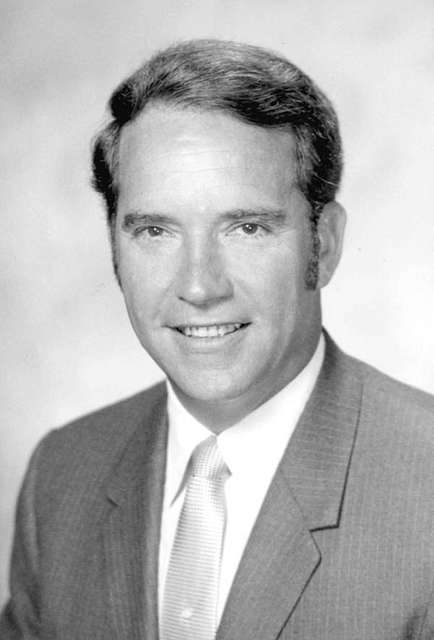The annals of American crime are replete with captivating mysteries, yet few rival the enigmatic saga surrounding “The Disappearance of DB Cooper.” On November 24, 1971, the day before Thanksgiving, an
unassuming man, who purchased a $20 ticket for Northwest Orient Airlines Flight 305 from Portland to Seattle under the alias Dan Cooper, would orchestrate one of the most audacious and perplexing
acts of air piracy in history. This singular event, characterized by its audacious execution and the hijacker’s complete vanishing act, has since transcended mere criminal investigation to become a cornerstone of American folklore, inspiring countless theories, books, and documentaries. The very name “D.B. Cooper” – a mishearing by a reporter that stuck – has become synonymous with an unsolved enigma, a testament to a criminal who seemingly dissolved into thin air, leaving behind a legacy of intrigue and unanswered questions.

The meticulously planned hijacking began shortly after takeoff. Cooper, described as being in his mid-40s and approximately six feet tall, calmly handed a note to a flight attendant. The message, delivered with an unsettling casualness, asserted his possession of a bomb within his briefcase. To underscore his threat, he momentarily opened the attaché case, revealing a tangle of wires, red sticks, and a battery – a chillingly convincing display. His demands were precise: four parachutes and $200,000 in twenty-dollar bills, a sum
equivalent to roughly $1.2 million in the early 21st century. Upon the flight’s landing in Seattle, Cooper released the 36 passengers, his initial objective seemingly achieved as authorities delivered the requested ransom and parachutes. However, this was merely the first act of his daring plan. He compelled the two pilots, a flight engineer, and a flight attendant to remain onboard.
With the plane refueled, Cooper issued a new set of instructions: fly to Mexico City, maintain an altitude below 10,000 feet, and keep a speed under 200 knots. The aircraft, now a stage for Cooper’s final
gambit, proceeded as directed. Then, at approximately 8:00 pm, somewhere between Seattle and Reno, Nevada—a location widely believed to be near Ariel, Washington—D.B. Cooper executed his
extraordinary exit. He lowered the aircraft’s rear steps and, into the turbulent, dark, and cold night, he jumped. He and the money vanished, leaving behind a bewildered crew and an enduring mystery that would captivate investigators and the public alike.
The Federal Bureau of Investigation immediately launched “NORJAK” (Northwest Hijacking), an investigation that would become one of the longest and most exhaustive in its history. Initially, the FBI
theorized that Cooper possessed intimate knowledge of both planes and the geographical area, leading to speculation that he might have had a military background, possibly as a paratrooper. However, this
initial assessment later shifted. Investigators concluded that the jump was exceptionally dangerous, and the discovery that Cooper had failed to notice his reserve parachute was sewn shut for training
purposes strongly suggested he was not an experienced skydiver. Despite interviewing some 800 suspects in the first five years, almost all were eliminated. DNA recovered from the tie Cooper left behind
before his jump proved crucial in ruling out many individuals. Richard Floyd McCoy, a prime suspect due to a similar hijacking he committed months later, was also eventually eliminated, partly because his physical description did not align with those provided by the flight attendants. McCoy’s dramatic escape from prison and subsequent death in a shootout only added to the layers of intrigue surrounding the case, though he was ultimately deemed not to be Cooper.
The prevalent theory among many was that Cooper, clad in a business suit, trench coat, and loafers, could not have survived the perilous jump. The conditions were brutal: winds exceeding 200 miles per hour at that altitude, combined with the fact that the parachute he used could not be steered, made a safe landing highly improbable. Furthermore, he would have landed in a rugged, heavily wooded, and
unforgiving terrain. Years of fruitless searching and dead-end leadsm passed until 1980, when a glimmer of hope emerged. A boy camping along the Columbia River, north of Portland and approximately 20
miles from Ariel, unearthed a decaying package containing $5,800. The serial numbers on the twenty-dollar bills precisely matched those of the ransom money. This breakthrough, though significant, proved
to be another tantalizing dead end, as an extensive search of the area yielded no further discoveries. Despite continued tips from the public, the FBI officially closed its investigation in 2016, citing that its
resources could be better allocated to other cases .
“The Disappearance of DB Cooper” has, over the decades, transcended its criminal origins to become a pervasive element of American popular culture. Cooper has achieved a near-mythical status, morphing into a folk hero who dared to “stick it to the man” during a period of economic uncertainty. His story has inspired countless songs, books, and films, reflecting a collective fascination with the audacious individual who seemingly outsmarted the authorities and vanished without a trace.
The enduring appeal of the Cooper mystery is expertly explored in documentaries such as “The Hijacker Who Vanished:
The Mystery of DB Cooper.” This captivating Storyville film, directed by John Dower, delves into various plausible theories surrounding Cooper’s identity, interviewing an array of individuals who claim to have known the culprit or possess evidence pointing to their suspect. The documentary showcases compelling characters, none more so than Jo Weber, who firmly believes her late husband, Duane, was D.B. Cooper. Her conviction is rooted in her husband’s dying words – “I’m Dan Cooper,” followed by “I love you” – and subsequent discoveries of fake IDs, a prison stint, a tax return suggesting a significant windfall around the time of the hijacking, and a magazine article about Cooper found in a secure lockbox. Duane’s purported familiarity with Oregon, the area where Cooper made his jump, also offers a plausible explanation for the recovery of the ransom money far from the assumed landing.
However, the documentary skillfully highlights the challenge of multiple plausible explanations. Amateur sleuth Jerry Thomas, who has dedicated himself to searching the wilderness for Cooper’s parachute since 1988, is convinced that Cooper did not survive the jump. Marla Cooper posits that her uncle, L.D., was the hijacker. There’s also the theory that Richard Floyd McCoy Jr., known for a similar hijacking, was replicating a previous, failed attempt where he might have lost the ransom money during his initial descent. Perhaps
the most intriguing and pulp-fiction-esque theory presented is that of Barbara Dayton, a transgender woman. Pat and Ron Forman, a likable couple who befriended Dayton, recall her exceptional piloting
skills and daring nature, eventually leading them to suspect she bore a striking resemblance to the mysterious Cooper.

The FBI’s loss of crucial evidence in the early stages of the investigation undoubtedly hampered their efforts to definitively solve the case. Yet, even with the official closure of the investigation, the
“The Disappearance of DB Cooper” continues to grip the public imagination. Dower’s film masterfully explores why this narrative holds such a powerful allure. Beyond the inherent mystery, it’s the
sheer audacity, the gumption, and the sense of defiant adventure that resonates. Vox pop interviews from the time reveal a curious public sentiment, with many secretly rooting for Cooper’s success despite
his criminal act. The documentary even draws parallels to the atmospheric and quirky world of “Twin Peaks,” with Dower noting the “Twin Peaks-esque” quality of Marla Cooper’s home. Ultimately, “The
Hijacker Who Vanished” is not just about the elusive D.B. Cooper; it’s a deeper exploration of human nature, belief, and the compelling power of an unsolved mystery that refuses to fade from collective
memory. The story of “The Disappearance of DB Cooper” continues to be a testament to a perfectly executed crime that defied capture, leaving behind a legacy of enduring fascination and an unsolved
puzzle that continues to beckon.
